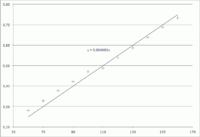zsolt1
Full Member level 6

- Joined
- Aug 11, 2012
- Messages
- 367
- Helped
- 50
- Reputation
- 100
- Reaction score
- 49
- Trophy points
- 1,308
- Location
- Cluj-Napoca, Romania
- Activity points
- 3,880
why is you circuit unstable ? I had a similar problem with a 741 opamp in an industrial aplication ... since a i had no time to investigate the circuits to get the cause , i resolved the problem by software. I simply made 10 consecutive ADC measurements and compute the average value , so i made pretty good readings by three orders after coma. It is also recommended to check sampling time requirements of your adc (). I also added a 10 nF cap on the input pin, to put noise to ground. Also check the input pin's impedance to be conform to datasheet requirements .





